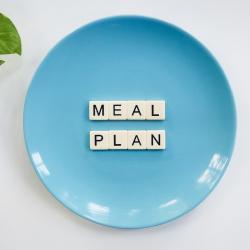Meal Planning for Busy Professionals: How to Stay on Track
Meal planning often gets relegated to the bottom of our to-do lists, drowned by work commitments, family responsibilities, and countless other obligations. However, taking the time to plan and prepare your meals can save you not only time and money but also contribute significantly to maintaining a healthy lifestyle. If you're a busy professional, here’s how you can make meal planning work for you.
Understand the Benefits
Before diving into the how-to of meal planning, it’s essential to understand why it’s worth the effort.
-
Time Efficiency: Meal planning means fewer last-minute trips to the supermarket and less time spent deciding what to eat. By setting aside a few hours once a week to prep your meals, you free up valuable time on weekdays.
-
Cost-Effective: Cooking at home is generally more economical than eating out. Meal planning allows you to buy ingredients in bulk, reducing waste and saving money.
-
Health Benefits: When you plan your meals, you have more control over the nutritional content of what you're consuming, allowing for balanced meals that align with your dietary goals.
-
Stress Reduction: Knowing what you’re going to eat can reduce decision fatigue, making your day less stressful.
Steps to Effective Meal Planning
Step 1: Assess Your Needs
Begin by determining your dietary preferences and nutritional goals. Are you aiming to lose weight, gain muscle, or perhaps maintain your current state of health? Your meal plan should reflect these objectives alongside any dietary restrictions or allergies.
Step 2: Plan Your Meals and Snacks
Once you’ve assessed your needs, outline your meals for the week. Start by selecting a few breakfast, lunch, and dinner options. Don't forget to include snacks. Variety is key; choosing a mix of proteins, vegetables, and grains will keep your meals interesting.
Consider creating a theme for each dinner, like "Meatless Monday" or "Taco Tuesday," to simplify decision-making. Utilize resources like cooking blogs, recipe books, and meal planning apps for inspiration.
Step 3: Make a Shopping List
With your menu ready, create a detailed shopping list. Check your pantry for staples you already have, and organize your list by store section to make shopping quicker and more efficient.
Step 4: Prep in Advance
Set aside a couple of hours over the weekend or whenever your schedule permits to prepare your meals. This might include chopping vegetables, cooking grains, and marinating proteins. Store these components in clear, labeled containers in the fridge or freezer.
Consider investing in quality food storage containers, which are crucial for keeping your dishes fresh throughout the week.
Step 5: Stay Flexible
Life is unpredictable, and even the best-laid plans can go awry. It’s okay to swap meals around or eat out occasionally. The goal is to have a plan that serves you, not to be a slave to it. Adjust portions and recipes based on how your week unfolds.
Tips for Success
-
Utilize Technology: Apps like Mealime, Yummly, and Paprika can streamline the meal planning process by offering recipes and generating shopping lists.
-
Batch Cooking: Prepare meals that freeze well, like soups, stews, and casseroles, so you always have a backup ready to go.
-
Incorporate Leftovers: Plan meals with leftovers in mind to maximize ingredients and reduce cooking time.
-
Stay Inspired: Follow social media accounts or cookbooks dedicated to quick and healthy meals to keep your kitchen creative and exciting.
Conclusion
Meal planning is a powerful tool for busy professionals seeking to maintain a healthy lifestyle amidst a hectic schedule. By taking a proactive approach to your meals, you can ensure nutritious eating, save time and money, and reduce stress. Start small, remain flexible, and find a rhythm that works for you. With practice, meal planning will become an effortless habit that supports your productivity and well-being.






















